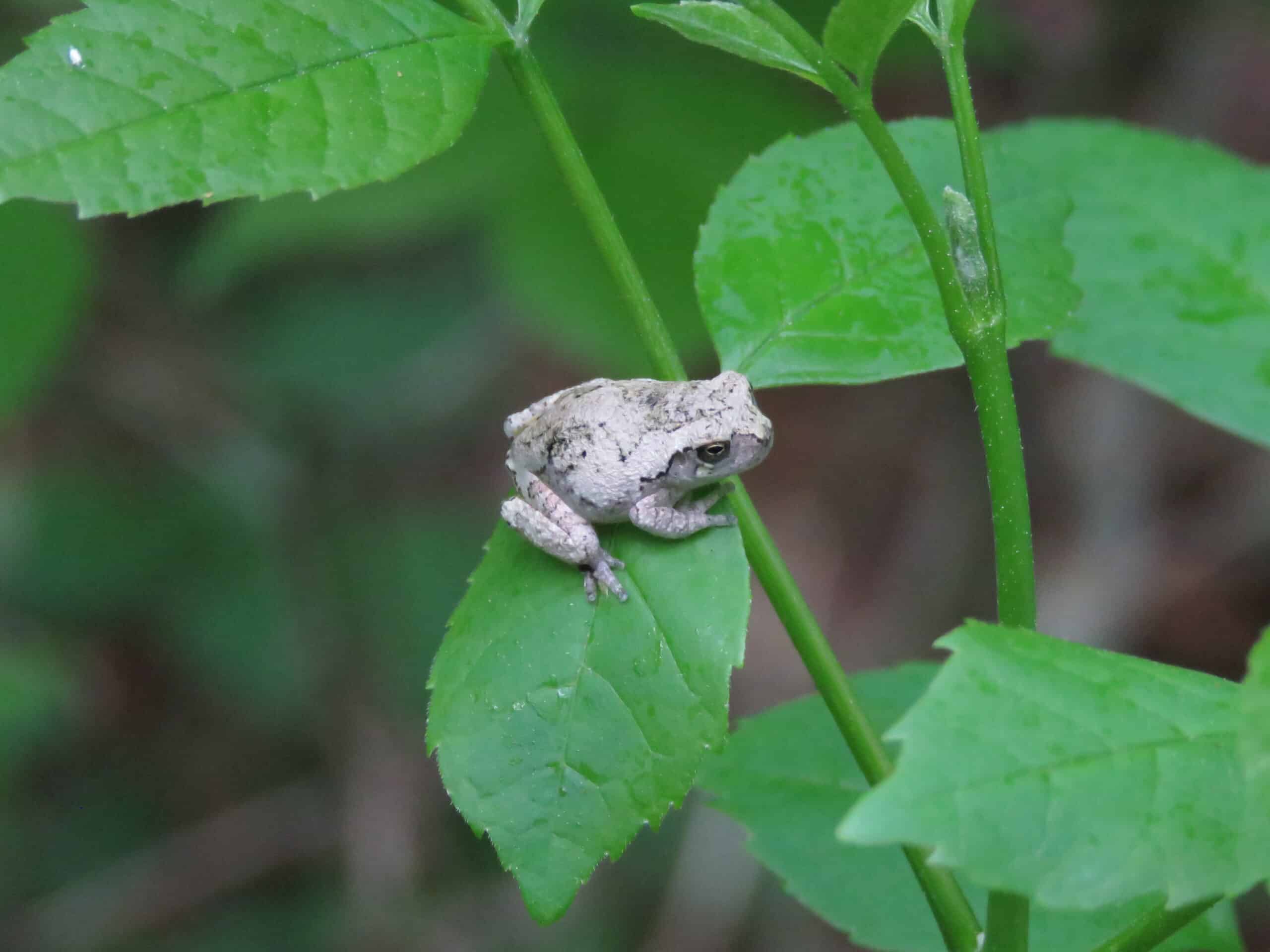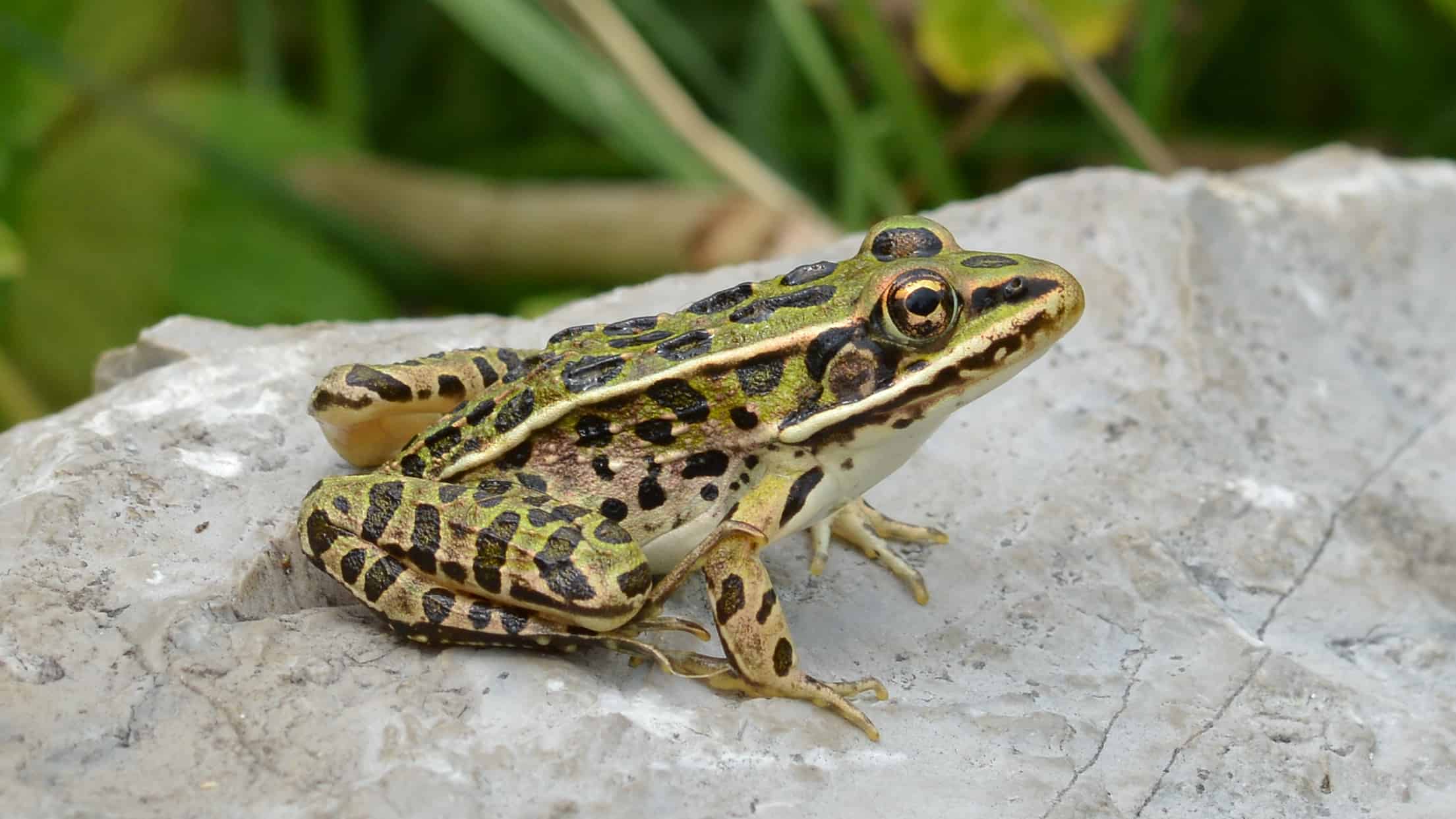Share this article
Wildlife Featured in this article
- green treefrog
- gray treefrog
Noise and lights deter city frogs
Surveys reveal that two species don’t fare well in urban areas with increased human sound and light pollution
Artificial night lights and sound pollution may repel city frogs during their breeding season.
“Their occupancy rates declined with increasing light and increasing noise,” said TWS member Jason Luscier, an associate professor of biological and environmental sciences at Le Moyne College in New York State.
For a study published recently in Urban Ecosystems, Luscier, lead author of the study, and his colleagues surveyed frogs in in Syracuse, New York and in the surrounding suburbs. They specifically focused on the evenings during three breeding seasons in June and July in 2018. “We would visit these sites a couple times each breeding season and listen for calls,” Luscier said.
They surveyed green frogs (Lithobates clamitans), which stay in or near water throughout their lives, and gray treefrogs (Hyla versicolor), which require ponds for breeding and reproduction, but otherwise spend much of their time in trees.
The team also measured environmental factors in their survey sites—things like the amount of light pollution, sound pollution, tree coverage and distance to waterways. Some of these areas were in city parks, while others were in residential neighborhoods or commercial areas with retention ponds.
Luscier and his colleagues found that of the two species they focused on, gray treefrogs had a greater aversion to human-caused light and noise than green frogs.
The researchers aren’t sure why, but Luscier speculated that the noise pollution hinders frogs from hearing potential mates or the approach of predators. Light pollution, on the other hand, may make it easier for predators to find frogs.
Frogs aren’t the only species affected by light and noise pollution. Partly as a result, Luscier said, “the city of Syracuse has been implementing more urban lighting with LED bulbs.”
He said that additional measures could be taken to further improve conditions, such as shutting off lights where possible during vulnerable breeding seasons. In addition, cities can use more lights with movement sensors and shields on street lamps that ensure the light is focused downward.
“This is an additional piece of research [showing] why those kinds of lighting adjustments may be beneficial,” Luscier said.
The researchers have communicated the results of this study to the city government in Syracuse in the hopes that it will inform future policy.
Header Image: Gray treefrogs were averse to human sound and light in Syracuse. Credit: Jason Luscier








